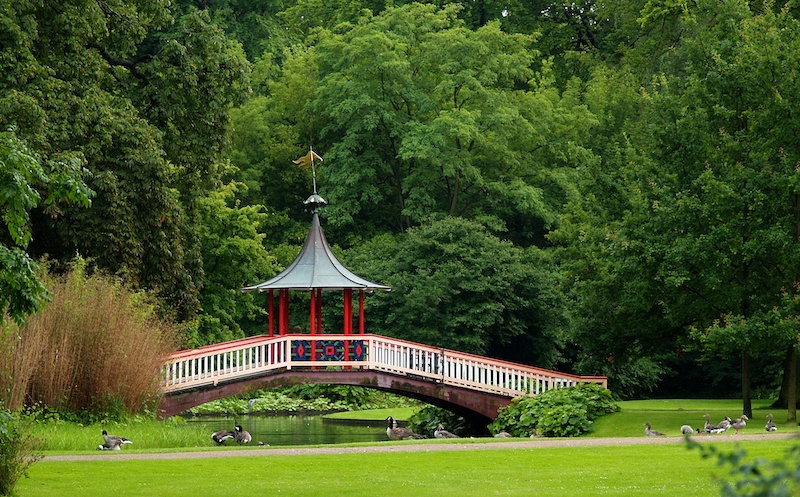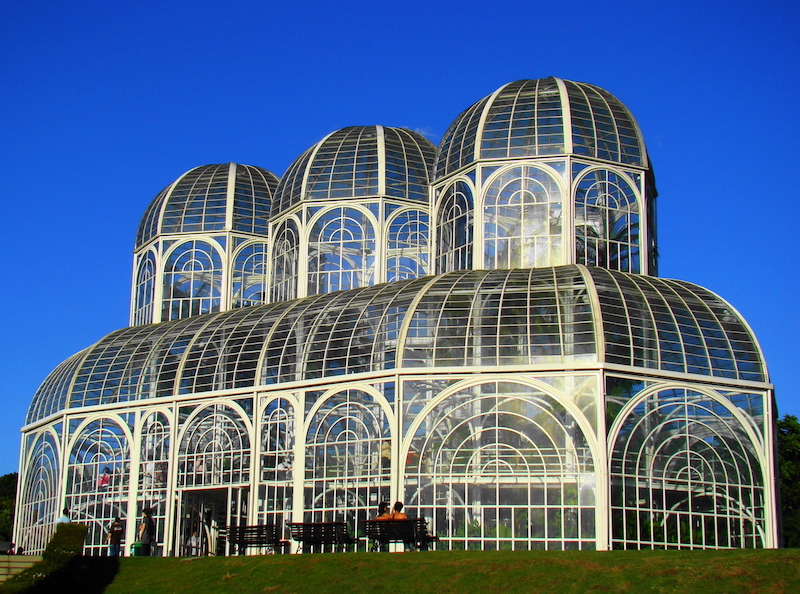The Hoʻomaluhia Botanical Garden In Hawaii

The Hoʻomaluhia Botanical Garden In Hawaii
Hoʻomaluhia Botanical Garden, located on the island of Oahu, offers a peaceful retreat into Hawaii’s diverse plant life. Spanning over 400 acres, this garden is a must-see destination for nature enthusiasts and visitors looking to explore the beauty of Hawaiian flora. The name Hoʻomaluhia translates to “a place of peace and tranquility,” and it truly lives up to this meaning.
The garden is renowned for its lush landscapes and scenic views. Visitors can enjoy a peaceful walk through vibrant tropical plantings, with mountains as the backdrop. The garden’s design reflects Hawaii’s diverse ecosystems, allowing guests to experience various environments, from tropical rainforests to arid desert landscapes.
Significance of Hoʻomaluhia botanical garden
Hoʻomaluhia botanical garden was established by the U.S. Army Corps of Engineers in the 1980s. Originally intended to prevent flooding in the area, the garden’s development has transformed it into an important botanical collection. Today, it serves as a resource for education, research, and conservation.
The garden was carefully planned with the goal of conserving native Hawaiian species and introducing plants from around the world. The diverse collection found here demonstrates the importance of protecting biodiversity and preserving endangered plant species. Each plant species has been selected for its ecological value and ability to thrive in Hawaii’s unique climate.
Design and layout
The garden’s layout highlights the varied landscapes of Hawaii. From towering trees to colorful flowering plants, each section of the garden reflects a different climate zone. One of the garden’s most striking features is its large, open spaces, which allow for unobstructed views of the surrounding mountains and valleys. The peaceful atmosphere of the garden invites visitors to wander and appreciate nature’s beauty.
The garden is divided into several distinct areas, each showcasing a different group of plants. For example, one section is dedicated to tropical rainforests, with plants that thrive in humid, shaded environments. Another section mimics the dry desert landscapes, featuring drought-resistant plants. Each area offers a new experience, keeping visitors engaged and curious as they explore the garden.
Tropical rainforest area
The tropical rainforest section of Hoʻomaluhia botanical garden is the most popular area to visit. Here, the air is thick with humidity, and the plant life is lush and vibrant. Tall trees with broad leaves create a canopy that shelters a wide variety of understory plants. The rainforest area is home to many species of ferns, orchids, and other tropical plants.
Walking through this area feels like stepping into another world. The sounds of rustling leaves and the scent of damp earth add to the immersive experience. Visitors can learn about the diverse plant species found in rainforests and how these plants adapt to their environment. The tropical rainforest area also showcases the beauty of Hawaii’s native species, many of which are rare and endangered.
The desert garden
In stark contrast to the tropical rainforest area is the desert garden, which features plants that thrive in arid conditions. This section of the garden showcases a variety of succulents, cacti, and drought-resistant plants. Despite the harsh conditions, these plants have developed fascinating adaptations to survive in the desert heat.
The desert garden offers a unique perspective on the resilience of plant life. Visitors can observe how plants have evolved to conserve water, with some species storing moisture in their thick, fleshy leaves. The dry, sandy landscape contrasts sharply with the lushness of the rainforest area, highlighting the diversity of plant life that can thrive in different climates.
Native plants section
A significant part of the garden is dedicated to Hawaiian native plants, which are vital to preserving Hawaii’s natural heritage. Many of these plants are endemic, meaning they are found only in Hawaii. The Hawaiian native plants section showcases species such as the endangered ʻōhiʻa lehua and the native mahoe tree. These plants are an essential part of Hawaii’s ecosystem and culture.
Visitors to this section of the garden can learn about the history and importance of native plants in Hawaiian traditions. The plants featured here have played a role in everything from traditional medicine to building materials. This section provides insight into the cultural significance of plants in Hawaii and the importance of protecting these rare species.
Education and research
The key mission of Hoʻomaluhia botanical garden is education. The garden offers a variety of programs and workshops for visitors of all ages. These programs teach about the importance of conservation, sustainable gardening, and native plant preservation. The garden also collaborates with local schools and universities to provide hands-on learning experiences for students.
Research is another vital aspect of the garden’s mission. Scientists and botanists use the garden as a living laboratory to study plant species and their ecological roles. By conducting research, they can learn more about how plants interact with their environment and how to protect endangered species. The garden serves as an invaluable resource for both education and scientific advancement.
Scenic views
The most striking feature of Hoʻomaluhia botanical garden is its breathtaking views. The garden is nestled in a valley between the Koʻolau mountain range and lush green hills. Visitors can enjoy panoramic views of these majestic mountains as they walk through the garden’s many trails. The surrounding natural beauty makes the garden a peaceful and serene place to visit.
The garden’s design takes full advantage of its stunning location. Many walking paths are lined with tropical plants, allowing visitors to take in both the flora and the scenery. Whether you’re exploring the rainforest or the desert garden, the views of the mountains in the background create an awe-inspiring atmosphere.
Hiking trails
In addition to its botanical displays, Hoʻomaluhia botanical garden offers several hiking trails for visitors who want to explore the surrounding landscape. These trails range from easy walks to more challenging hikes, giving visitors the opportunity to experience the natural beauty of the area up close. Some trails lead to higher elevations, where hikers can enjoy even more dramatic views of the valley and mountains.
Hiking in the garden provides a unique way to experience the plants and landscapes of Hawaii. Along the trails, visitors can spot rare and exotic plants, observe wildlife, and take in the tranquility of the environment. The peacefulness of the garden, combined with the opportunity for exploration, makes it an ideal destination for outdoor enthusiasts.
Conservation
As a botanical garden, Hoʻomaluhia plays a significant role in conservation efforts. The garden is home to a variety of endangered species, many of which are native to Hawaii. By preserving these plants, the garden helps protect biodiversity and prevent the extinction of important species. The garden’s conservation efforts extend beyond the plants it houses, as it also serves as a model for sustainable gardening practices.
The garden works closely with local organizations and government agencies to ensure the protection of Hawaii’s unique plant species. Through research, education, and active conservation efforts, Hoʻomaluhia Botanical Garden is making a valuable contribution to the preservation of Hawaii’s natural heritage.
Sanctuary for wildlife
In addition to its plants, Hoʻomaluhia botanical garden is home to a variety of wildlife. The garden’s diverse ecosystems provide a habitat for birds, insects, and other animals. Visitors can often spot native Hawaiian birds such as the ‘I‘iwi and the Hawaiian coot. The garden’s ponds and water features attract a variety of aquatic creatures, adding another layer of biodiversity to the area.
The combination of plant life and wildlife creates a harmonious environment within the garden. The garden provides a peaceful sanctuary for animals, giving them a safe space to thrive. This natural balance is an important aspect of the garden’s ecological value, making it an important location for both plant and animal conservation.
Events and community engagement
Throughout the year, Hoʻomaluhia botanical garden hosts a variety of events that engage the local community. From plant sales to cultural celebrations, the garden provides opportunities for people to connect with nature and each other. These events promote environmental awareness and encourage sustainable practices.
The garden also offers volunteer opportunities, allowing individuals to get involved in the garden’s upkeep and conservation efforts. By participating in these programs, visitors can contribute to the garden’s mission and gain a deeper appreciation for the plants and landscapes they help preserve.
Place of peace and discovery
Visiting Hoʻomaluhia botanical garden is an enriching experience that offers something for everyone. The garden provides a peaceful sanctuary in which to connect with nature. The diversity of plant species, stunning views, and educational programs make it a valuable resource for visitors of all ages. For anyone looking to immerse themselves in the beauty of Hawaiian flora and fauna, Hoʻomaluhia botanical garden is a destination that should not be missed.



